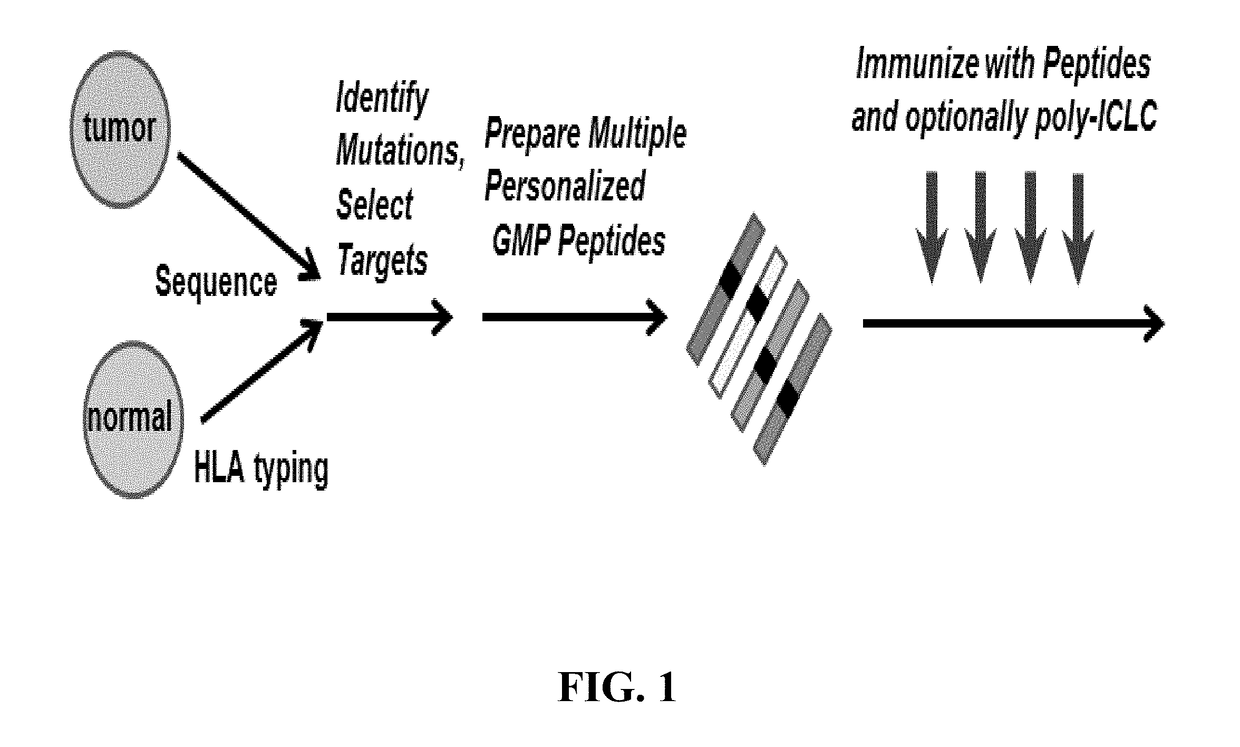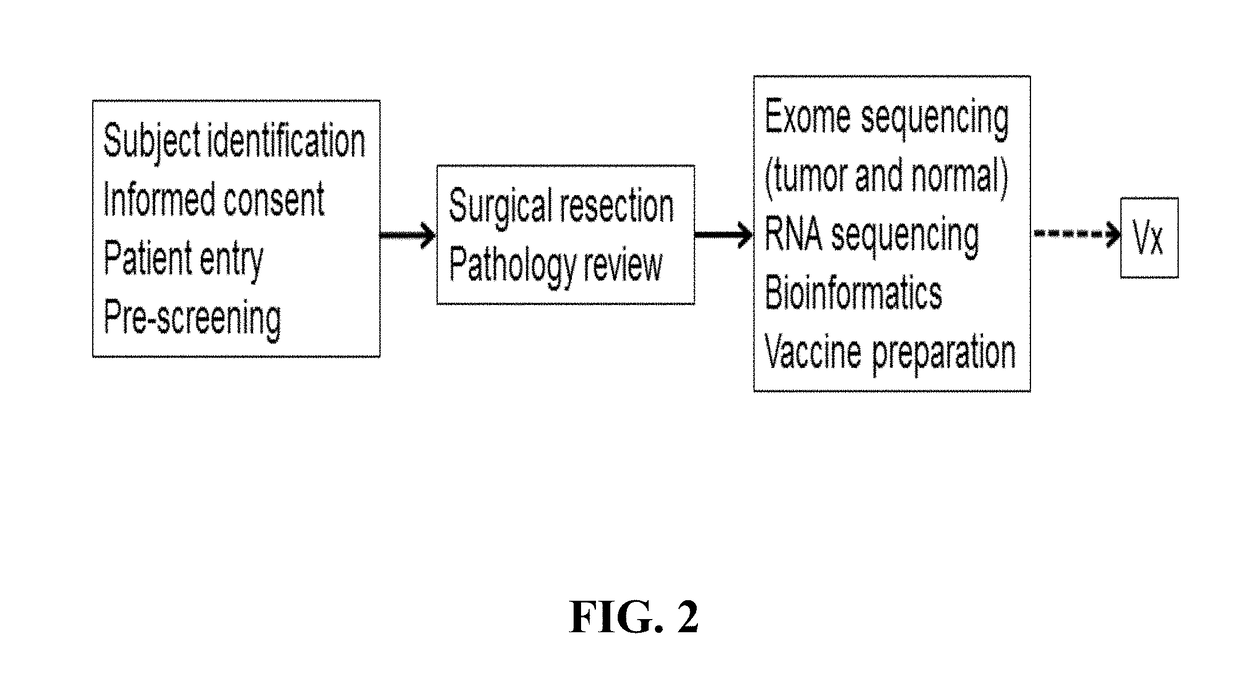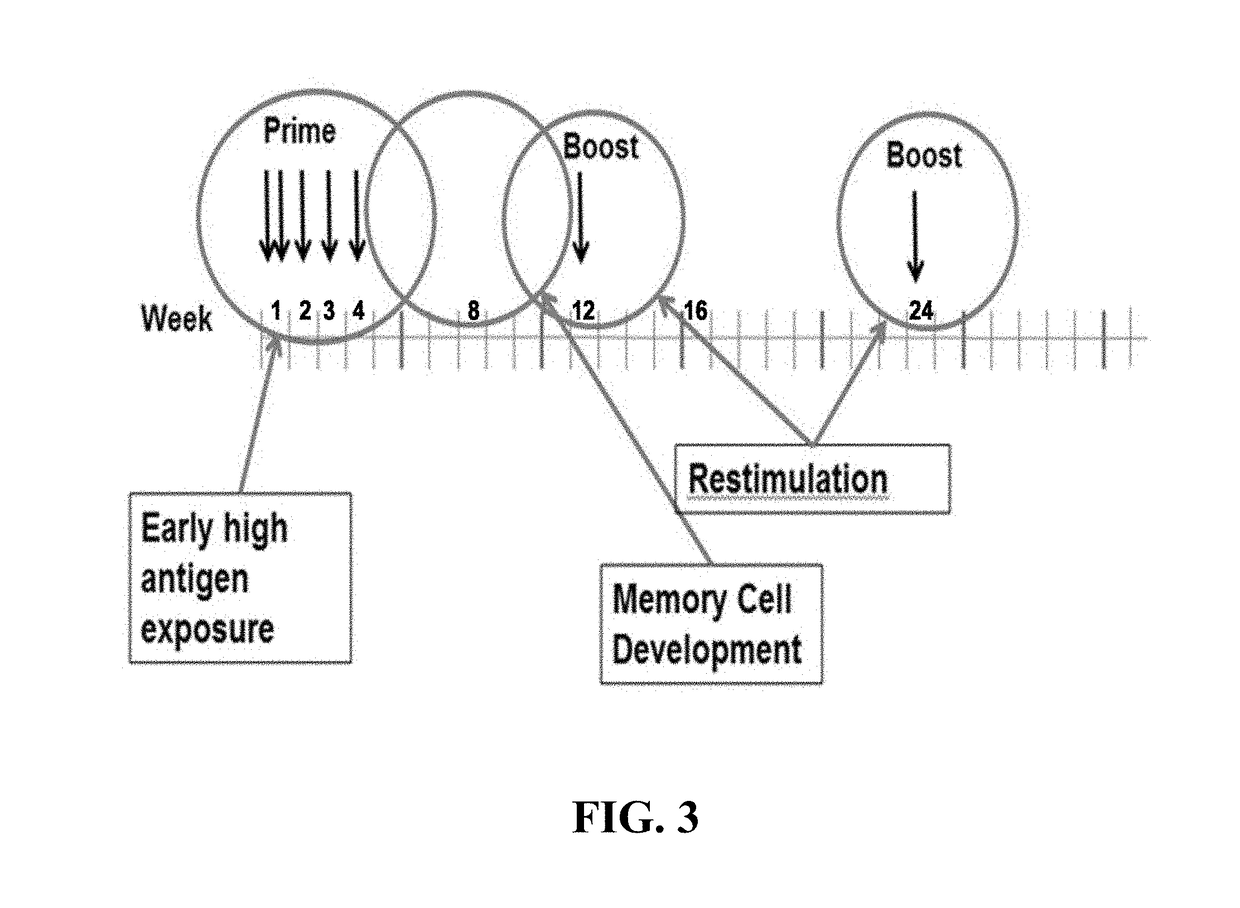Formulations for neoplasia vaccines and methods of preparing thereof
- Summary
- Abstract
- Description
- Claims
- Application Information
AI Technical Summary
Benefits of technology
Problems solved by technology
Method used
Image
Examples
example 1
[0410]Cancer Vaccine Testing Protocol
[0411]The herein-described compositions and methods may be tested on 15 patients with high-risk melanoma (fully resected stages IIIB, IIIC and IVM1a,b) according to the general flow process shown in FIG. 2. Patients may receive a series of priming vaccinations with a mixture of personalized tumor-specific peptides and poly-ICLC over a 4 week period followed by two boosts during a maintenance phase. All vaccinations are subcutaneously delivered. The vaccine or immunogenic composition is evaluated for safety, tolerability, immune response and clinical effect in patients and for feasibility of producing vaccine or immunogenic composition and successfully initiating vaccination within an appropriate time frame. The first cohort can consist of 5 patients, and after safety is adequately demonstrated, an additional cohort of 10 patients may be enrolled. Peripheral blood is extensively monitored for peptide-specific T-cell responses and patients are foll...
example 2
[0417]Target Patient Population
[0418]Patients with stage IIIB, IIIC and IVM1a,b, melanoma have a significant risk of disease recurrence and death, even with complete surgical resection of disease (Balch et al, Final Version of 2009 AJCC Melanoma Staging and Classification J Clin Oncol 27:6199-6206 (2009)). An available systemic adjuvant therapy for this patient population is interferon-α (IFNα) which provides a measurable but marginal benefit and is associated with significant, frequently dose-limiting toxicity (Kirkwood et al, Interferon alfa-2b Adjuvant Therapy of High-Risk Resected Cutaneous Melanoma: The Eastern Cooperative Oncology Group Trial EST 1684 J Clin Oncol 14:7-17 (1996); Kirkwood et al, High- and Low-dose Interferon Alpha-2b in High-Risk Melanoma: First Analysis of Intergroup Trial E1690 / 59111 / C9190 J Clin Oncol 18:2444-2458 (2000)). These patients are not immuno-compromised by previous cancer-directed therapy or by active cancer and thus represent an excellent patien...
example 3
[0423]Dose and Schedule
[0424]For patients who have met all pre-treatment criteria, vaccine administration can commence as soon as possible after the study drug has arrived and has met incoming specifications. For each patient, there is four separate study drugs, each containing 5 of 20 patient-specific peptides. Immunizations may generally proceed according to the schedule shown in FIG. 3.
[0425]Patients are treated in an outpatient clinic. Immunization on each treatment day can consist of four 1 ml subcutaneous injections, each into a separate extremity in order to target different regions of the lymphatic system to reduce antigenic competition. If the patient has undergone complete axillary or inguinal lymph node dissection, vaccines are administered into the right or left midriff as an alternative. Each injection can consist of 1 of the 4 study drugs for that patient and the same study drug is injected into the same extremity for each cycle. The composition of each 1 ml injection ...
PUM
| Property | Measurement | Unit |
|---|---|---|
| Molar density | aaaaa | aaaaa |
| Molar density | aaaaa | aaaaa |
| Molar density | aaaaa | aaaaa |
Abstract
Description
Claims
Application Information
 Login to View More
Login to View More - R&D
- Intellectual Property
- Life Sciences
- Materials
- Tech Scout
- Unparalleled Data Quality
- Higher Quality Content
- 60% Fewer Hallucinations
Browse by: Latest US Patents, China's latest patents, Technical Efficacy Thesaurus, Application Domain, Technology Topic, Popular Technical Reports.
© 2025 PatSnap. All rights reserved.Legal|Privacy policy|Modern Slavery Act Transparency Statement|Sitemap|About US| Contact US: help@patsnap.com



